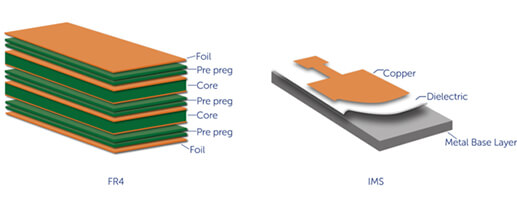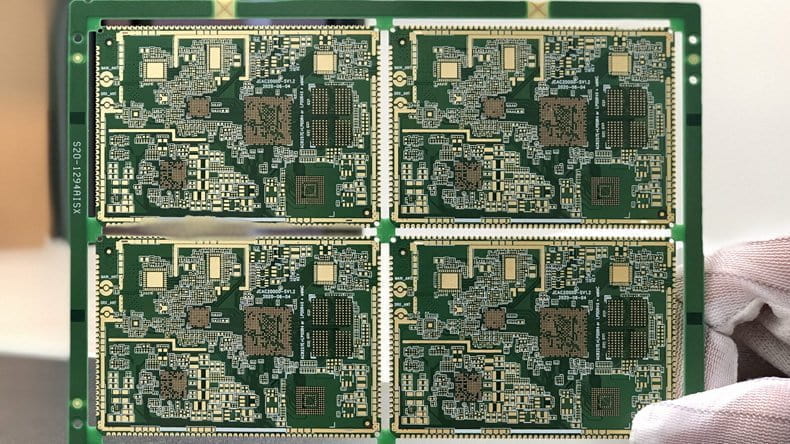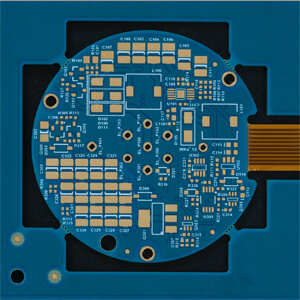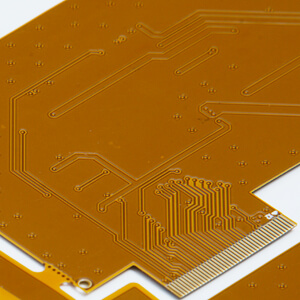PCB Materials-The basic components of the PCB
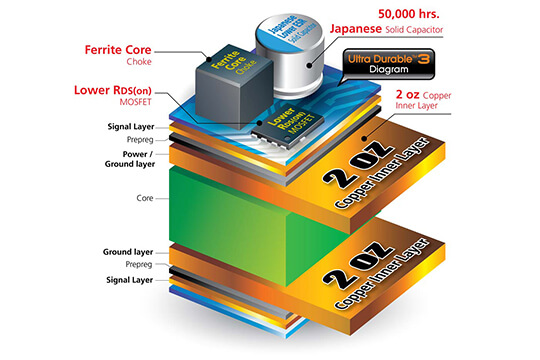
Overview of PCB Materials
- A printed circuit board is a conductive pattern of interlayer interconnection made of copper foil and PP (pre-preg) by selective hole processing, electroplating, and etching the PCB materials. It is PCB materials that make PCBs electrically connect and support circuits and insulate. PCBONLINE provides custom PCBs made of materials best meeting your requirements, and we write this page to make you clear about the PCB materials.
Why Choose PCB Prototypes from PCBONLINE?
- • We can manufacture and assemble any simple and complex PCBs at any volume that you need them.
- • All of our PCBs, PCBAs, and any of our other products are strictly quality controlled to be compliant with ISO, RoHS, IATF, REACH, and UL standards.
- • We have three PCB factories with 100+ in-house R&D engineers and 500+ highly-trained technicians.
- • We can customize and generate any type of PCB and PCBA while also providing free DFT, DFM, and DFX reports.
- • We have the quickest delivery times with the fastest delivery in only 12-hours!
- • We can also provide component sourcing services as well as PCB layouts for your design requirements.
- • PCBONLINE has specialized in advanced PCB prototypes since 2005 with rich experience.
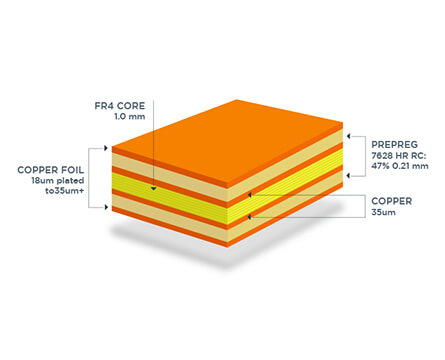
About PCB Materials
About the copper clad laminates
- PCBs’ performance, quality, manufacturing cost, and manufacturing level all depend on CCL (copper clad laminates). CCL can be divided into a rigid type and flexible type according to the used PCB materials. Rigid CCL is made of reinforced material, impregnated with resin adhesive, dried, cut, and laminated, then covered with copper foil and steel plate, and formed in a hot pressing machine at high temperature and high pressure. While flexible CCL is composed of copper foil, an insulating film, and an interlayer adhesive, which are compounded and processed by hot pressing. Below we use CCL to let you understand PCB materials clearly.
PCB Materials for Rigid CCL
Rigid CCL is made of copper foil and PP.
Copper foil is an indispensable raw material for CCL production. It is divided into RA (rolled annealed) copper and ED (electrodeposited) copper.
• RA copper foil is made by rolling a copper plate repeatedly. It is mainly used for FPC CCL.
• ED copper foil is a primary product produced by a special electrolytic machine and then processed by the finishing process. According to the thickness, its specifications can be divided into 9um, 12um, 18um, 35um, and 70um.v
PP means that fibers are woven, and resin (epoxy resin or phenolic resin) is used to bond them together in the manufacturing process. To decide which type of PP meeting for your requirements, you can consider its quality characteristics of resin content, resin flow, gel time, and volatile content. Its different types are:
• Woven glass fabric: it is made of glass fiber, and its composition is Aluminum borosilicate, which has high insulation performance. It has the advantages of a large breaking strength coefficient, good dimensional stability, not easy deformation, and uniform weight and thickness.
• Glass fabric paper: also known as glass fiber non-woven fabric, it is one of the main raw materials of CEM-3. It uses E-type glass fiber with a diameter of 5-10um chopped by a paper-making process and dispersed in an aqueous solution. After eliminating lumps, it is made into a uniform paper product on a short mesh paper machine. This kind of PCB material’s price is much lower than that of glass cloth.
• Impregnated fiber paper is a material composed of pulp components
• Resin: it includes Phenolic resin and epoxy resin.
PCB Materials to reinforce PCB
The PCB materials below are used for a dielectric layer to reinforce the PCB.
- 1. Phenolic material:it is used for a dielectric layer that uses phenolic resin as adhesive and wood pulp fiber paper as reinforcing material. Its specifications include FR-1, FR-2, XPC, and XXX PC. It can be punched, and it has the advantages of low price and small specific gravity.
- 2. Epoxy material: it is used for a dielectric layer that uses epoxy resin as adhesive and glass fiber cloth as reinforcing material. Its specifications include FR-4 and FR-5. This kind of PCB material has high dimensional stability and impact/moisture resistance, and it is used most.
- 3.Composite epoxy material: it is used for a dielectric layer that uses epoxy resin as adhesive, wood pulp fiber paper as the reinforcing material’s inner core, and glass fiber cloth" as reinforcing material’s surface. Its specifications include CEM-1 and CEM-3. Its performance is between phenolic material and epoxy material.
- 4. Metal material: It consists of a metal layer, dielectric layer, and copper foil. Its specifications include aluminum base and copper base. It features good heat dissipation.
- 5.Ceramic material: this kind of PCB material includes AL2O3, AIN, and SiC.
- 6. Other material: other material is used for a dielectric layer that uses other special resin as adhesive and glass fiber cloth as reinforcing material. Its specifications include PI (Polyimide), PTFE (Teflon), and BT. It has the advantages of high TG, low water absorption, low dielectric constant, and low dielectric loss.
- According to rigid CCL’s flame-retardant characteristics, PCB materials can be divided into UL94-V0 and UL94-HB.
- According to rigid CCL’s performance, PCB materials and boards themselves can be divided into the high-frequency, high-TG, and low-CTE.
PCB Materials for Flexible CCL
Flexible CCL is made of copper foil, an insulating film, and inter-layer adhesive.
Flexible CCL’s insulating film can be divided into two types, namely the polyester film and polyimide film.
• Polyester film’s thickness is 25um-125um. It has good dielectric performance, good chemical resistance, and low hygroscopicity, but it’s not good as polyimide film in heat resistance and dimensional stability.
• Polymide film’s thickness is 7.5um-75um. It has good dimensional stability and thermal stability and can be used continuously at working conditions under 200°C.
Flexible CCL’s inter-layer adhesive is used for the adhesion between the copper foil and the insulating film. Its materials include epoxy resin and acrylic resin.
• Epoxy resin has high heat resistance, good dielectric performance, and good chemical resistance.
• Acrylic resin has better processability and excellent flexibility.
- According to used PCB materials of the boards, you can custom buy rigid PCB, rigid-flex PCB, flexible PCB, high-frequency PCB, high-TG PCB, halogen-free PCB, lead-free PCB, aluminum PCB, thick-copper PCB, ceramic PCB, carbon ink PCB, carbon nanotube PCB from PCBONLINE. If you are not very sure about choosing which materials for your PCBs, you can contact us online or via email at info@pcbonline.com.
Our PCB Service for You

One-Stop PCB Manufacturing

Quick Manufacturing and Delivery

Custom PCB Design & Assembly

21 Years of Experience

